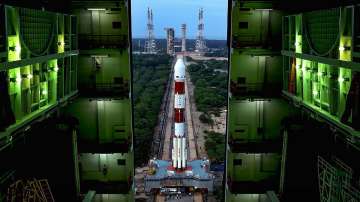Aditya L1 launch: The country's maiden solar mission- Aditya-L1 was launched today (September 2) at 11:50 am from the launch pad at Sriharikota in Andhra Pradesh. With the launch rehearsal and vehicle internal checks all being completed, the Indian Space Research Organisation (ISRO) was all set for the country's maiden solar mission- Aditya-L1 from the Satish Dhawan Space Centre (SDSC-SHAR) in AP's Sriharikota.
Aditya-L1 will be placed in a halo orbit around Lagrangian Point 1 (or L1), which is 1.5 million km away from the Earth in the direction of the sun. It is expected to cover the distance in four months' time. It will revolve around the Sun with the same relative position and hence can see the Sun continuously.
Here are some key objectives of Aditya L1:
The major objectives of India’s solar mission include the study of the physics of solar corona and its heating mechanism, the solar wind acceleration, coupling and dynamics of the solar atmosphere, solar wind distribution and temperature anisotropy, and origin of Coronal Mass Ejections (CME) and flares and near-earth space weather.
The atmosphere of the sun, the corona, is what we see during a total solar eclipse. A coronagraph like the VELC is an instrument that cuts out the light from the disk of the sun, and can thus image the much fainter corona at all times, the Bengaluru-based Indian Institute of Astrophysics said.
Aditya L1 is mainly designed for providing remote observations of the solar corona and conduct in-situ observations of the solar wind at L1 (Sun-Earth Lagrangian point), which is about 1.5 million kilometres from the Earth.
The overall objective is to understand the dynamics in the solar atmosphere, he said, adding that UV rays are important for the sun-climate relationship because these are absorbed in the earth's stratosphere, in the process significantly impacting the chemistry of Earth's atmosphere.
Solar Ultraviolet Imaging Telescope (SUIT) will capture images at different heights of the solar atmosphere and, additionally, on-board intelligence incorporated into it will allow it to decide which part of the sun to observe as it rotates.
Know more about Aditya-L1 mission:
Shifting the focus to its next space odyssey after successfully placing a lander on the moon's uncharted South Pole region on August 23, ISRO is going to launch India's first solar space observatory Aditya-L1 by the PSLV-C57. It will carry seven different payloads to have a detailed study of the sun, four of which will observe the light from the sun and the other three will measure in-situ parameters of the plasma and magnetic fields.
The largest and technically most challenging payload on Aditya-L1 is the Visible Emission Line Coronagraph or VELC. VELC was integrated, tested, and calibrated at the Indian Institute of Astrophysics’ CREST (Centre for Research and Education in Science Technology) campus in Hosakote in collaboration with ISRO.
(With agencies inputs)
ALSO READ: Aditya-L1 launch LIVE updates: India's first mission to Sun all set to launch in Sriharikota today
ALSO READ: ISRO all set for Aditya-L1 launch, shares quick facts about it: Check here
